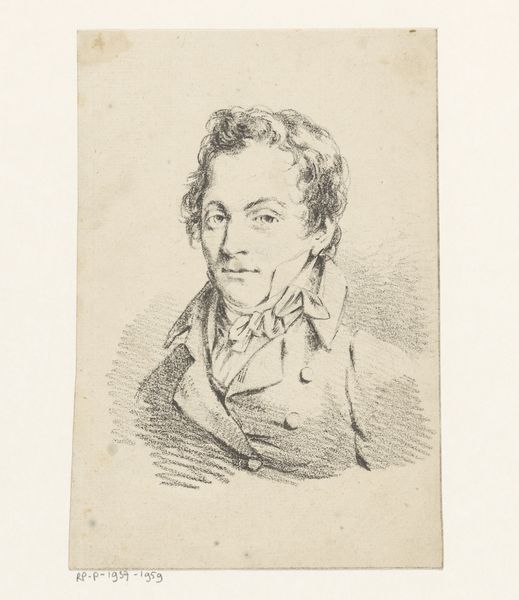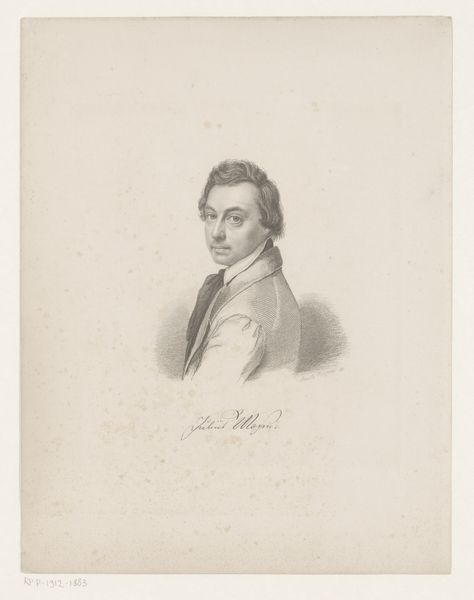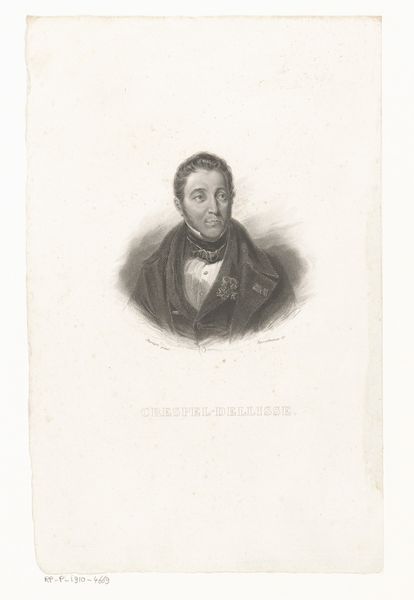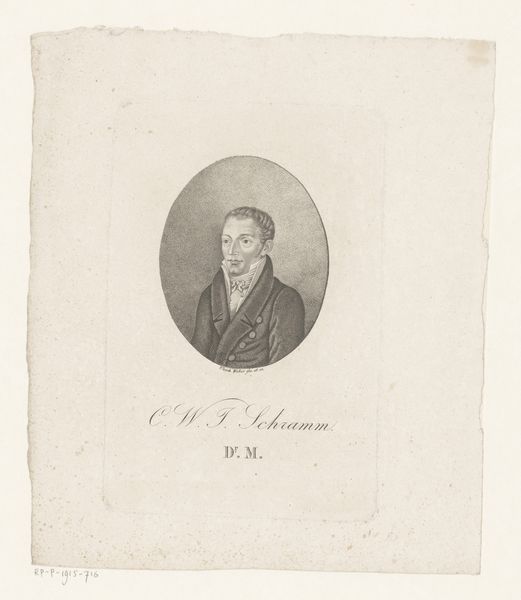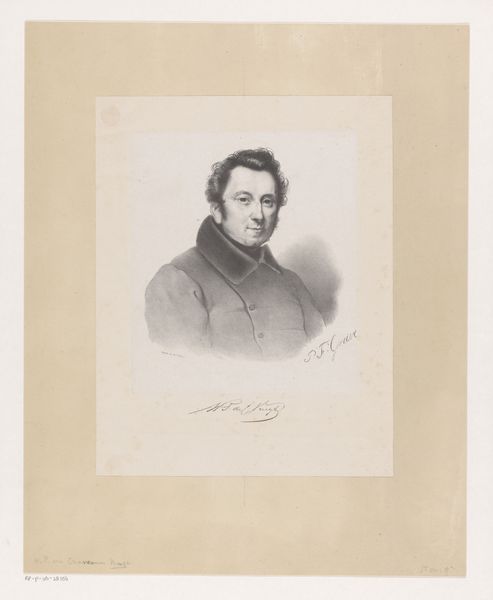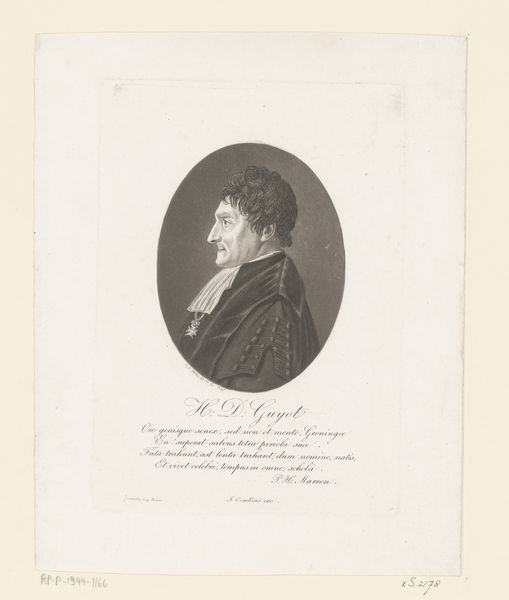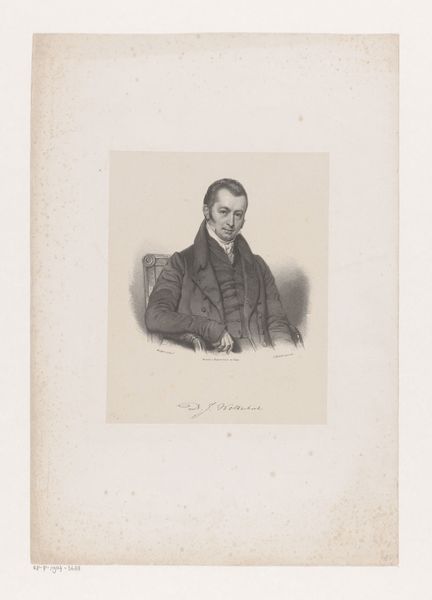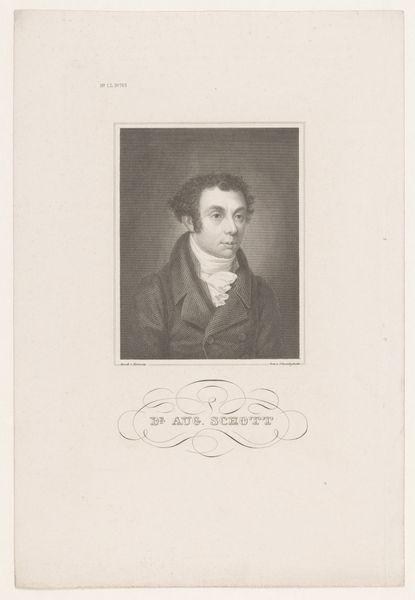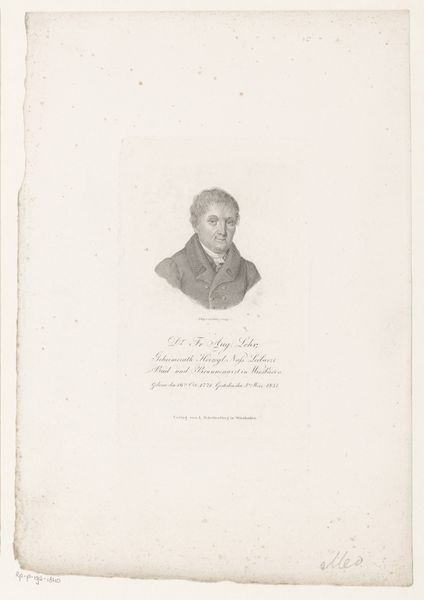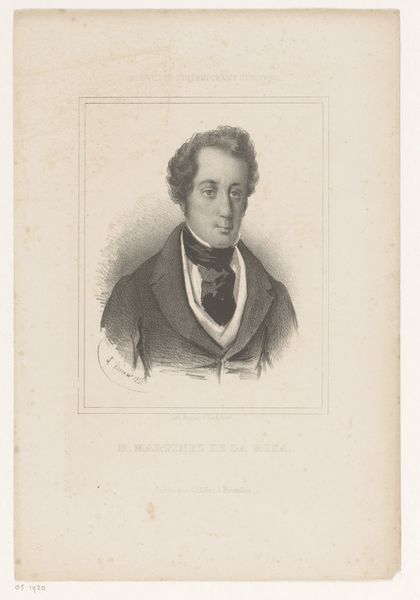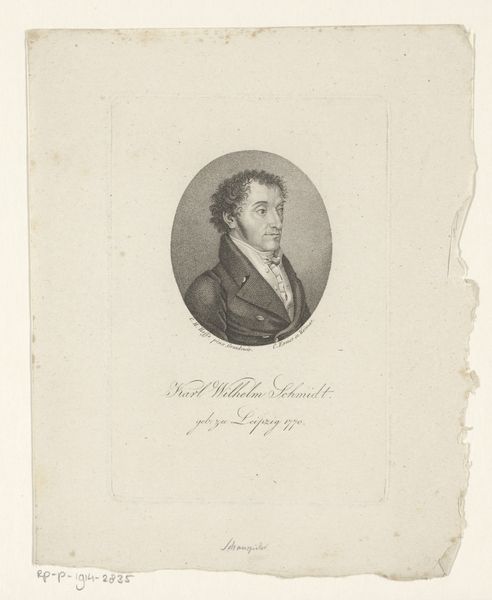
drawing, print, pencil
#
portrait
#
pencil drawn
#
drawing
#
neoclacissism
# print
#
pencil sketch
#
pencil drawing
#
pencil
#
pencil work
#
watercolour illustration
Dimensions: height 238 mm, width 156 mm
Copyright: Rijks Museum: Open Domain
Curator: Well, let's delve into this artwork. This is "Portret van Karl von Österreich-Teschen" by Karl Heinrich Wenng, made sometime between 1800 and 1854. It’s a print, utilizing pencil and other drawing techniques. Editor: It’s striking! There’s something austere yet meticulously rendered about it, even a bit ghostly. I notice immediately the precision in the shading and the cross-hatching – a tangible sense of the labor involved. Curator: Indeed. The portrait embodies Neoclassical ideals, showcasing not just a likeness, but an ideal. Consider the social context; prints like these served to disseminate images of power and authority, reinforcing social hierarchies. Editor: And we shouldn’t ignore that it’s a print – a mass-produced object meant for wider circulation, which brings in questions of value and consumption. How does the relative inexpensiveness affect our perception of the sitter's prestige? Is it a democratization of power? Curator: That’s a key question. This imagery saturated society, shaping public perception of figures like Karl von Österreich-Teschen. The printmaking process, by its very nature, invites a consideration of accessibility and how meaning is constructed through repetition and dissemination. Editor: Right, the way these prints are made and distributed reveals a lot about the artistic and economic infrastructure of the time. What types of workshops produced these, and who consumed them? What was the societal impact of churning out all of these portraits of prominent rulers? Curator: These prints helped reinforce dynastic power structures and aristocratic influence, reaching into homes and public spaces alike, creating a shared visual language. Wenng probably received commissions for producing it and worked with assistants in order to cater to a very high number of demands. Editor: Examining the texture and depth created through the pencil strokes and printed transfers adds another layer of appreciation. It moves beyond mere image reproduction and towards establishing an icon. Curator: Precisely. It's a potent reminder of how images aren’t neutral carriers of information, but active agents in shaping public memory and upholding authority. Editor: Thinking about how the image was conceived, crafted, distributed and consumed gives me a new perspective on art and its ability to shape and uphold power. Curator: Agreed. I'm left reflecting on how a single portrait can encapsulate complex narratives of political authority and its relationship to society.
Comments
No comments
Be the first to comment and join the conversation on the ultimate creative platform.
